Some artists spend years in art school, perfecting their craft and following a clearly defined path. Others, like Shyne Eghosa Obazee, stumble into it by chance—only to realize they’ve found something they were always meant to do. A self-taught Nigerian artist, Shyne recently discovered his passion during a 2023 branding and marketing course in Barcelona. One unexpected art exercise, a handful of crayons, and a moment of creative freedom set him on a path he never saw coming.
Since then, Shyne’s work has burst onto the scene with raw energy and deep African influences. Imagine Basquiat meets Barcelona street art, infused with the bold patterns of African masks and textiles. In a short time, he’s gained recognition, securing a spot at the 2024 Chianciano Biennale and exhibiting across Barcelona.
In this interview, Shyne opens up about his unconventional journey, the artists and movements that shaped him, and the historical threads woven into his work. He talks about the overlooked African roots of abstract art, his connection to the textures of Barcelona, and how every piece he creates is part of an ongoing dialogue between cultures. Keep reading to dive into a story of discovery, identity, and artistic rebellion.
You discovered your passion for art in 2023—how did your creative journey begin?
My journey into painting wasn’t something I ever planned. I just kind of stumbled into it. I never imagined myself as an artist or even thought about using my hands to create. I’ve lived in different countries, mostly working as a DJ — Malaysia, UAE, Azerbaijan, and Georgia, but my move to Barcelona in 2021 was unexpected. The COVID pandemic was a challenging time for me. I won’t go into the personal struggles, but I left Tbilisi, Georgia and returned to Benin City, Nigeria to reconnect with my family, ground myself, and reset.
I was actually preparing for a U.S. Visa interview when my Uncle suggested I consider Spain instead, and here I am. I enrolled in a master’s program at IED in Barcelona. I wanted a fresh start somewhere I could feel safe and be happy.
The course I chose, “Branding and Marketing”, wasn’t something I was particularly passionate about but towards the end, we had an art section. The lecturer brought in supplies, told us to pick any medium and apply it however felt right. That’s when I started using my hands, working with crayons, and I immediately felt this connection. When the lecturer asked how I felt, I just said, “free” That’s what art gives me, freedom. It was such a memorable moment, a turning point in my life, I knew I wanted to follow that feeling. I have that first drawing framed at home still. When I shared the story with my girlfriend she then surprised me with a set of art classes, and that’s when the next steps in my journey began.
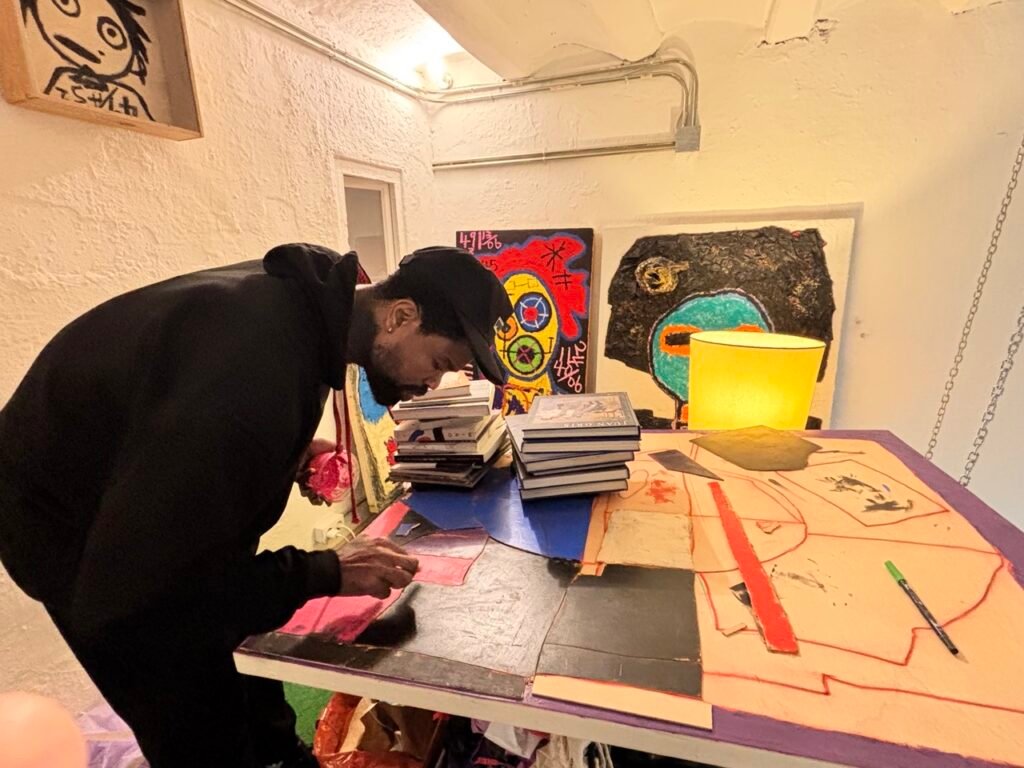
Your work embraces the energy of Art Brut and Neo-expressionism. What draws you to these movements, and how do they influence your creative process?
Starting out with no training, no background, just a strong instinct to create, was overwhelming. I didn’t know much about the art world. It was hard to even think of myself as an artist, but what I was making felt very real to me. One of my first gallery visits ever was to the Moco Museum in Barcelona. I had already done a few paintings, and I was immediately drawn to the Basquiat piece there. His style felt familiar, like a perfected version of what I was trying. You have to understand that a couple of years ago I didn’t even know who these artists were. Not only had I never made art, it had never even crossed my mind to explore any kind of interest in it. The art world felt like it belonged to someone else, like the golf club..it wasn’t a place where I ever imagined myself. When I saw that Basquiat piece though, it hit me hard, something about the rawness, and his story as a black man in this art world, just resonated with me. I saw parts of myself in it.
It’s not that I was drawn to these movements as such, more that these movements gave me the freedom to feel I might belong in the art world.
That moment, realising he was more than a name in a Jay-Z or A$AP Rocky track, sent me down a path of reading, studying, and absorbing everything I could. Spain was the perfect place for that. As I continued to read I came across material on Art Brut and Neo-Expressionism movements, I knew my art was figurative, bold, intuitive, and these movements provide a framework where that naturally fits. That was a relief. It felt like a permission to continue to create and to worry less about my total lack of academic training, the institutional art world or even art classes. Art Brut and Neo-Expressionism challenge traditional ideas of what art should be, who makes it, and how it should be enjoyed or experienced. It’s not that I was drawn to these movements as such, more that these movements gave me the freedom to feel I might belong in the art world.
African art and masks play a significant role in your work. How do you see your art in conversation with these traditions and their influence on Western artists?
Wow, where to start, I’m fascinated by this topic at the moment. African culture has historically influenced Western artists, including Picasso and the Cubists. Living in Barcelona I was surrounded by Picasso’s work and it also really resonated with me. I couldn’t put my finger on why, not just Picasso but Miró, Clavé, Tàpies and more recently Antonio Saura and Manolo Valdés, their art felt very inspirational and vaguely familiar to me.
My own work is significantly influenced by my culture, the essence of my work is African. It’s who I am, and it naturally comes through in what I create. The colours I use are heavily influenced by African prints – vibrant reds, yellows and those bold tones. The figures in my work are inspired by my interpretation of the African masks and artifacts I saw all around me as a child, mostly during traditional ceremonies and festivals.
Barcelona also really inspires me—the colours, the energy. There’s a mix, but my roots always show through. Reflecting on this and my newly acquired knowledge of artistic movements I came to see African masks as more than just cultural artifacts or inspiration for me, I recognised they actually have a strong Neo-Expressionist feel.

How does your new knowledge shape your understanding of these connections?
Through my reading I stumbled onto an article which mentioned Picasso’s interest in (and inspiration from) African artifacts. As I read more about the Cubist movement and the School of Paris I began to realise why Picasso, and Cubism in general also felt instinctively familiar to me. I searched for more information on this topic and although it appears quite frequently, it’s more of an interesting fact mentioned in passing. At the same time, I was searching for other Black Artists to connect with, and in particular, African Artists. The work I was finding was mostly figurative, social-realism or hyper-realism, very representative of Black American or African life. Basquiat aside, it felt like Abstract Art was more the domain of white artists.
…during the period when Picasso and the Cubists took great influence from African culture, artifacts, and masks—the same items, when presented as African, were dismissed as primitive.
I eventually came to realise that during the period when Picasso and the Cubists took great influence from African culture, artifacts, and masks—the same items, when presented as African, were dismissed as primitive. Of course it also took some time for the mainstream to warm to Cubism, but Picasso’s genius, coupled with his academic background gave him just enough access to influence the art circle of the day. His new movement was celebrated as an artistic breakthrough relatively quickly. So, as the Cubists were turning their backs on realism and taking inspiration from so-called primitivism, African artists began turning away from their own artistic traditions to cater for foreigners and colonial audiences who still rejected traditional African art and objects as too primitive! The Scramble for Africa occurred between 1870 and 1914 and the Cubism movement was developed by Picasso and Braque between 1907 and 1914. Coincidence, I think not! If anything, African masks were already Cubist before Cubism even had a name.

You make a very good point. Is there anything you’re especially curious to dive deeper into?
There is so much more to talk about and to learn here and I’m really just a novice, I would love it if an art academic wrote a thesis on this. I would definitely read it!! Answering the original question, I think I view my work as part of that ongoing dialogue, a conversation between cultures and history. I’m not sure if I’m reclaiming, reinterpreting, or challenging those influences. It feels to me like the Western world has both taken inspiration from, and devalued African art, at exactly the same time. For this reason, I’d also love to see more Black Art Collectors and collectors of Black Art really start giving more attention to abstract art as something with origins in African, rather than something considered European. Of course, I also want to grow my own audience and sell my work! But, seriously, abstract art is deeply rooted in African culture, and I think it’s time we acknowledge that more.
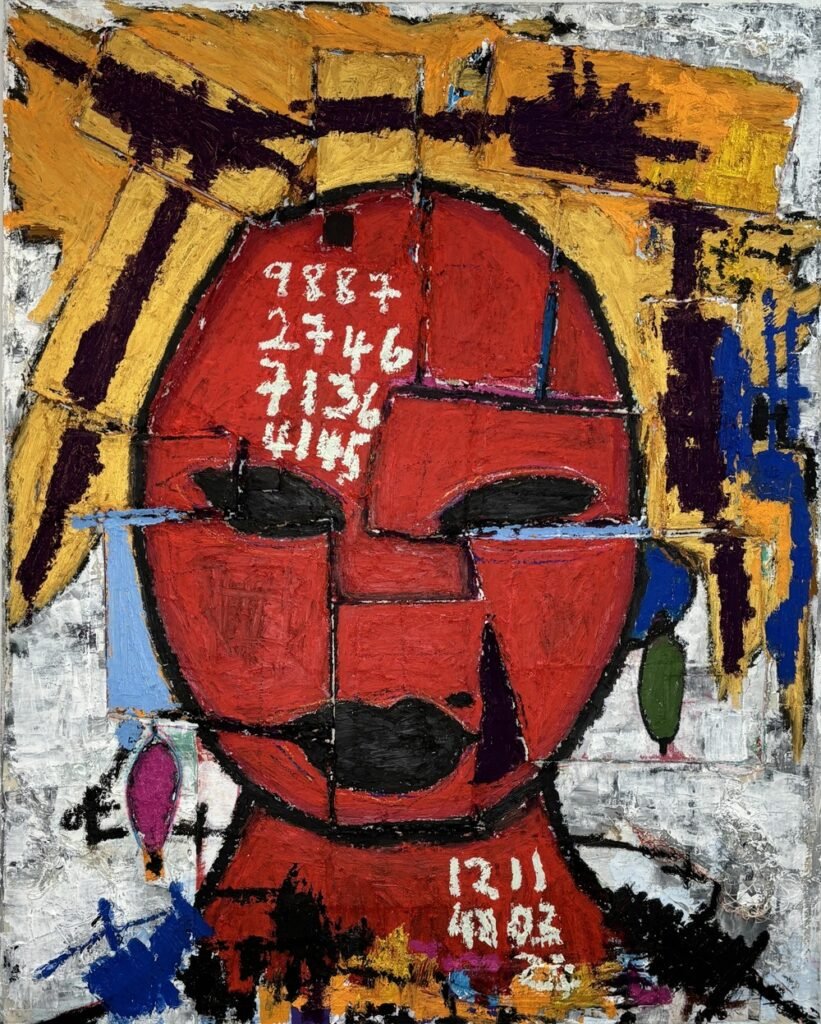
Barcelona has a rich artistic history—how has the city’s environment, culture, and street art scene influenced your work?
Barcelona’s energy and influence can’t but seep into my work. I’ve already mentioned Picasso, Miró, Clavé, Tàpies and of course Manolo Valdé (whom I would love to meet). These artists have influenced me greatly and their work is so visible in the city, Clavé for example has a structure in the Parc de la Ciutadella that I walk by on a regular basis. La Fundació Joan Miró and the Museu Tàpies are so accessible and Picasso is, happily, everywhere. Beyond that, it’s the architecture, the textures, and the way the city holds both history and contemporary influences that inspire me.
For example, in “Señor Fuerte”, the shape of his hair is actually based on the Museu Tàpies building, not just the structure itself. At the time, Ghanaian artist Serge Attukwei Clottey had an installation draped over the façade, and that fusion of the building with his work stuck with me. I pay close attention to my surroundings, especially the city’s architecture, and often draw direction or inspiration from it.
There are those moments of coincidence that feel like they connect everything. A few months ago, we had a group show at Unmaking Art Studio, and one of the younger artists, Abril, had actually participated in a project tied to that Serge Attukwei Clottey installation. These unexpected links, between artists, spaces, and ideas, keep me inspired.
…it’s the whole aesthetic of the streets, the layers of peeling plaster, paint and posters, the accidental artistic value of old walls, the way the city wears its history.
Then there’s the street art, it’s not just graffiti, it’s the whole aesthetic of the streets, the layers of peeling plaster, paint and posters, the accidental artistic value of old walls, the way the city wears its history. The rawness of that feeds into my approach. And, of course, I take inspiration from the other emerging artists I’ve met along the way. It’s something I never imagined I would be immersed in. Artists like Laura Lighthouse, who explore themes of urban displacement and the reclamation of space, make me even more aware of how the city itself influences what we create. The layering of history, culture, and change in a place like Barcelona is something that absolutely influences my work.

You’ve mentioned that your art is a conversation between cultures and history. Can you share a specific piece that embodies this dialogue and its deeper meaning?
I’ve already mentioned “Señor Fuerte”, that’s probably a good example, but also In “BG Feelings” (Big Feelings)” where I celebrate the strength and beauty of Black women. The vivid yellow background contrasts with the black outline of an African woman with flowing dreadlocked hair. The shapes that the lines form are reminiscent of African textile patterns and colours. The dreadlocked hair is significant as hair has long been a symbol of cultural identity and later of resistance, and pride within the African diaspora.
This was one of my earlier pieces, created before I had fully explored the influence of African culture on European modern art. Looking back, I realise that even unintentionally, there is a connection here. African aesthetics, including dreadlocks, were also considered unkempt until they were rebranded as fashionable or even artistic when adopted by white mainstream culture.
I also often incorporate cowries into my work, as they hold deep spiritual and cultural significance in many African traditions. Once used as currency, they are also seen as symbols of prosperity, protection, and divine connection. Like dreadlocks, cowries carry a rich history that has often been overlooked or stripped of its deeper meaning when appropriated. Bringing them into my work is a way of connecting with my roots and sharing that meaning.
A lot of the images I make pull from the past, but the numbers keep me in the present.
Numbers show up a lot in my work too. A lot of the images I make pull from the past, but the numbers keep me in the present. Sometimes, it’s just a way to sneak in a reference to my favorite color, putting its number somewhere in the piece. Other times, it’s more random, if I get a call in the middle of painting, I might jot down the time and work it into the art.. Little things like that become part of the piece, almost like timestamps, marking the moment it was created. It’s not always intentional, but it all ends up feeling connected.
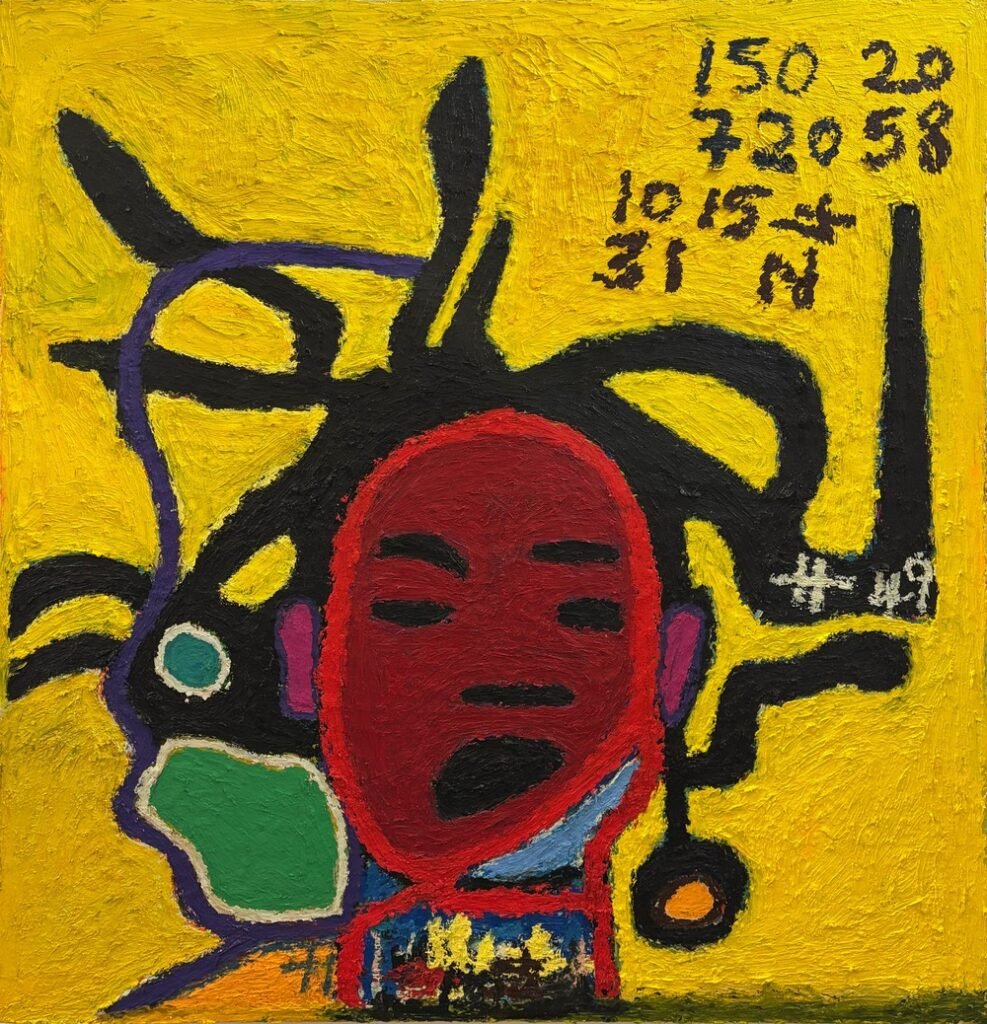
You incorporate diverse materials like oil sticks, fabric, and pastels on wood board. What role does texture play in your artistic expression?
Texture is essential to me, it gives me control while allowing my eyes to move freely across the surface. It also reflects my journey. I’ve always loved the physicality of holding something, so discovering oil sticks felt like gaining both power and freedom. Working this way creates a direct connection between my hand and the surface, no delay, no barrier, just expression. I have a stammer, and in some way, the textures I create feel like a form of compensation, free-flowing, expressive, and unhindered. I started drawing with my fingers and rarely use brushes, which makes this tactile engagement even more important to my process.

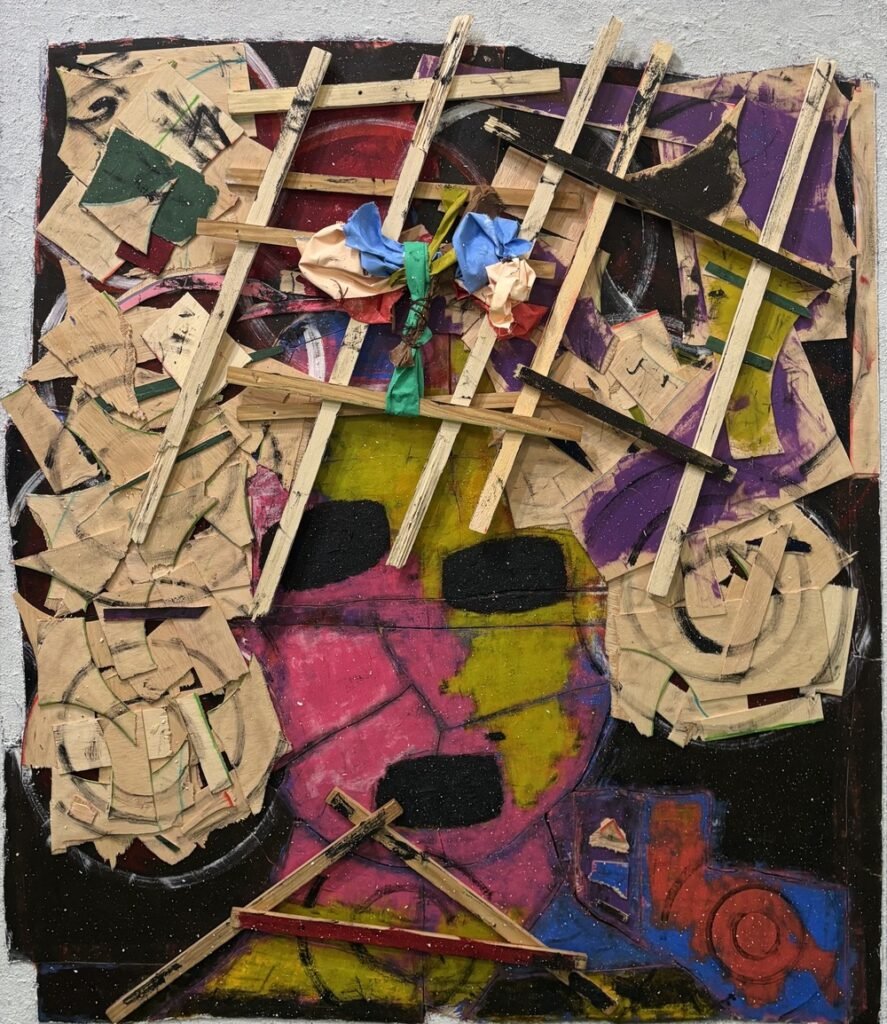
Being self-taught allows for an organic approach to creativity. How has your lack of formal training shaped the way you experiment and evolve as an artist?
It’s the most freeing part of my process, I feel like I’m truly expressing myself without any boundaries. Looking back, it’s hard to say where I would have ended up had I even considered formal training. Art wasn’t even on my radar back then. If I had followed the more traditional path, especially in Nigeria in the ’90s, I might never have discovered these styles which truly resonate with me now. I know that many abstract artists have had the technical and academic training to master realism before moving on to abstraction. I don’t believe I have that skill, so formal and academic training would, most likely, have just led me to believe that I’m not an artist! That what I create is not “art.”
It would definitely have restricted my growing inclination towards free expression and non-perfection. I experiment now without these expectations. Actually, after my first set of art classes, I realised that even in this setting I was looking for some kind of academic approval. I was painting to please the art teacher. She was actually amazing, but with a little self-reflection I concluded that I was restricting myself. I’ve always wanted to be the “perfect” student and before those classes I went to the local art shop and bought every single thing on the list, down to the little wooden box to store the supplies. Once I let all of that go, I felt so much freer. Now I still paint with my fingers, I create my own wood-board canvas right down to sawing and sanding the supports. I make my own gesso and my supplies are happily living in random boxes and bags or on the floor where I can easily access them. Lately, I’ve also been experimenting with fabric and different ways of using the wood.
I do feel that not having this formal background has made it much harder to speak the language of art. I find myself, at almost fifty years old, reeducating myself to understand this art world and gain the knowledge to hold a conversation like the one we are having now!
What was it like to be selected for the 2024 Chianciano Biennale? Did that experience shift your perspective on your artistic journey?
The Chianciano Biennale is known for its inclusivity, allowing both self-taught and formally educated artists to exhibit their work side by side, emphasising creativity and innovation over traditional academic qualifications. This was another turning point for me. It was the first time I truly believed in myself as an artist. Being surrounded by amazingly talented artists of all genres and backgrounds, and having collectors engage with my work gave me a renewed sense of confidence. It also led me to meeting Tobian Art, a gallery in Florence that now represents me. The experience gave me the validation I needed and showed me that my approach to art had a place in the broader art world. It was a really important moment for me.
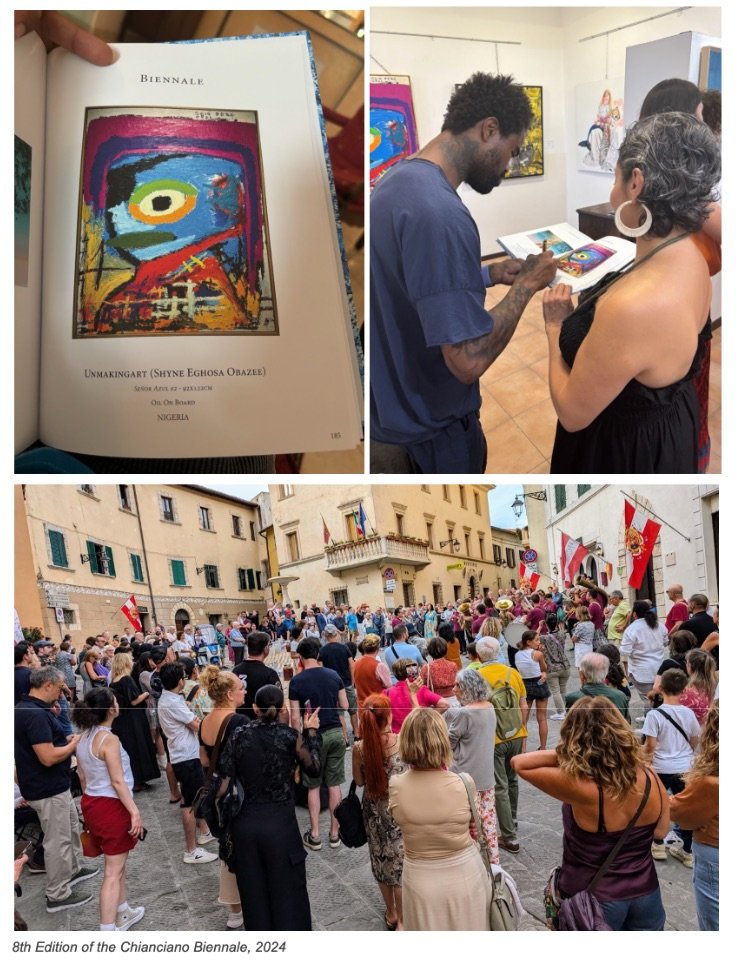
As someone who started relatively recently, what challenges have you faced entering the art world? How are you navigating them?
Starting out recently has definitely come with its challenges. There’s been so much to learn, from vanity galleries to various NFT scams, and people taking advantage of the fact that emerging artists often lack experience. Vanity galleries, in particular, can be exhausting, they’ll show interest and then quickly hit you with high fees for “exposure” and a spot in exhibitions. It’s exploitation disguised as opportunity. The gallery world also felt overwhelmingly white, both in terms of the galleries, the art, and the people running them, which made it harder to feel accepted or seen. I quickly learned to be cautious and trust my instincts. My advice to emerging artists is simple: believe in yourself, find people who believe in you and be wary of any “opportunity” that presents itself too conveniently. True opportunities take consistency, effort, focus and luck—and come with support and genuine exposure. As Artists we also often focus on connecting with other artists, be sure to also research and recognise collectors who your work might resonate with and find ways to connect with them, this is something I am still working on myself.
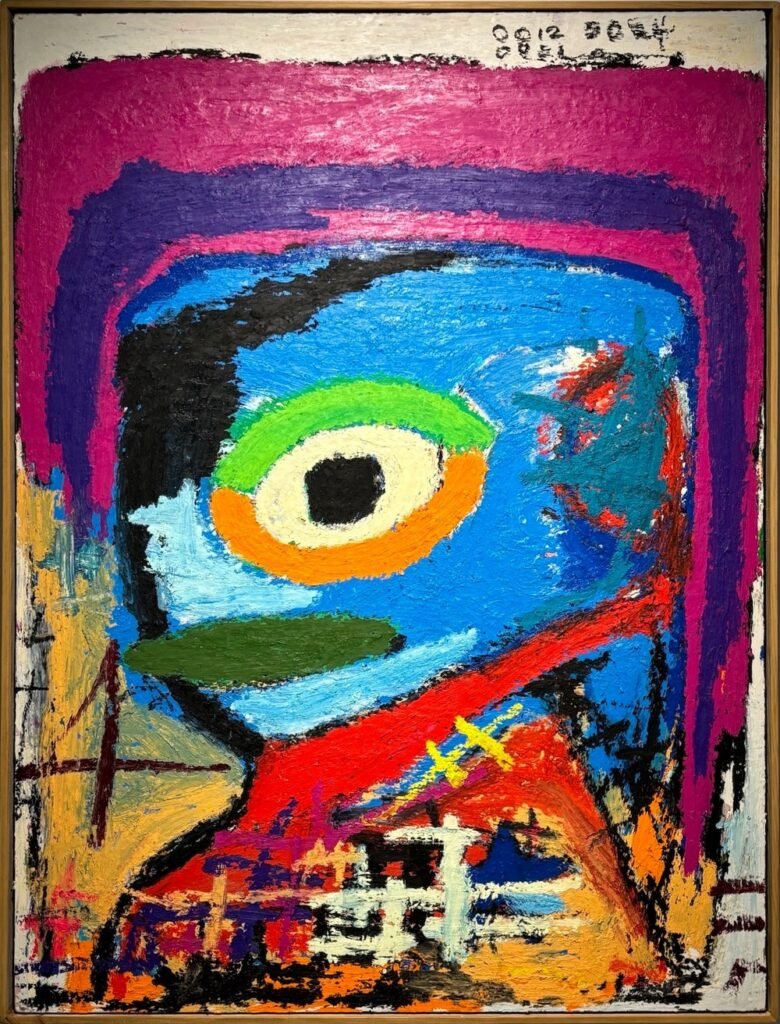
Looking ahead, what themes or ideas are you excited to explore in your future work? Are there any artistic risks you’re eager to take?
I’m excited to experiment with using materials in new ways. I want to push myself by combining mediums that don’t usually go together, like fabrics, acrylics, oils, wood, and other materials, in a way that feels natural. Right now, I’m particularly focused on working with wood, especially plywood. It’s a material that reminds me of cutting firewood as a child, and using it now feels like a full circle moment, even though the reasons for using it are different. I’d love to experiment with metal in the future, but I’m not quite ready for that yet. For now, wood is where I feel most inspired.
Lastly, where can we learn more about you and your artwork?
Instagram: https://www.instagram.com/unmakingart/
Website: https://www.unmaking-art.com/artists/shyne-collection
Gallery: Unmaking Art Studio, Carrer Lancaster 10, 08001 (Every day 1pm to 8pm )


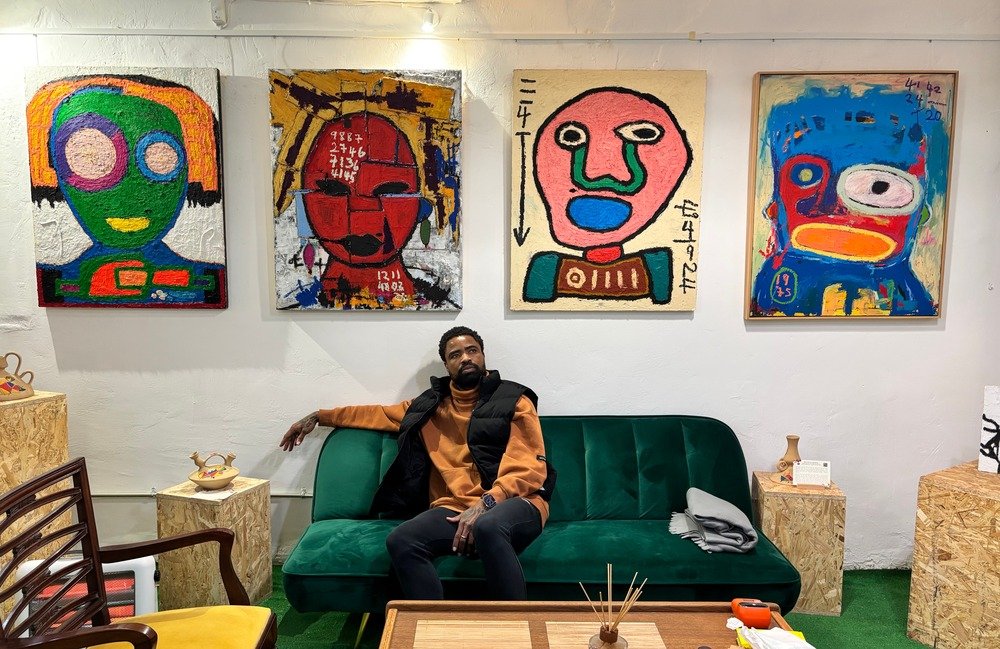

Pingback: Unmaking Art Studio Is Building a More Inclusive Gallery Scene